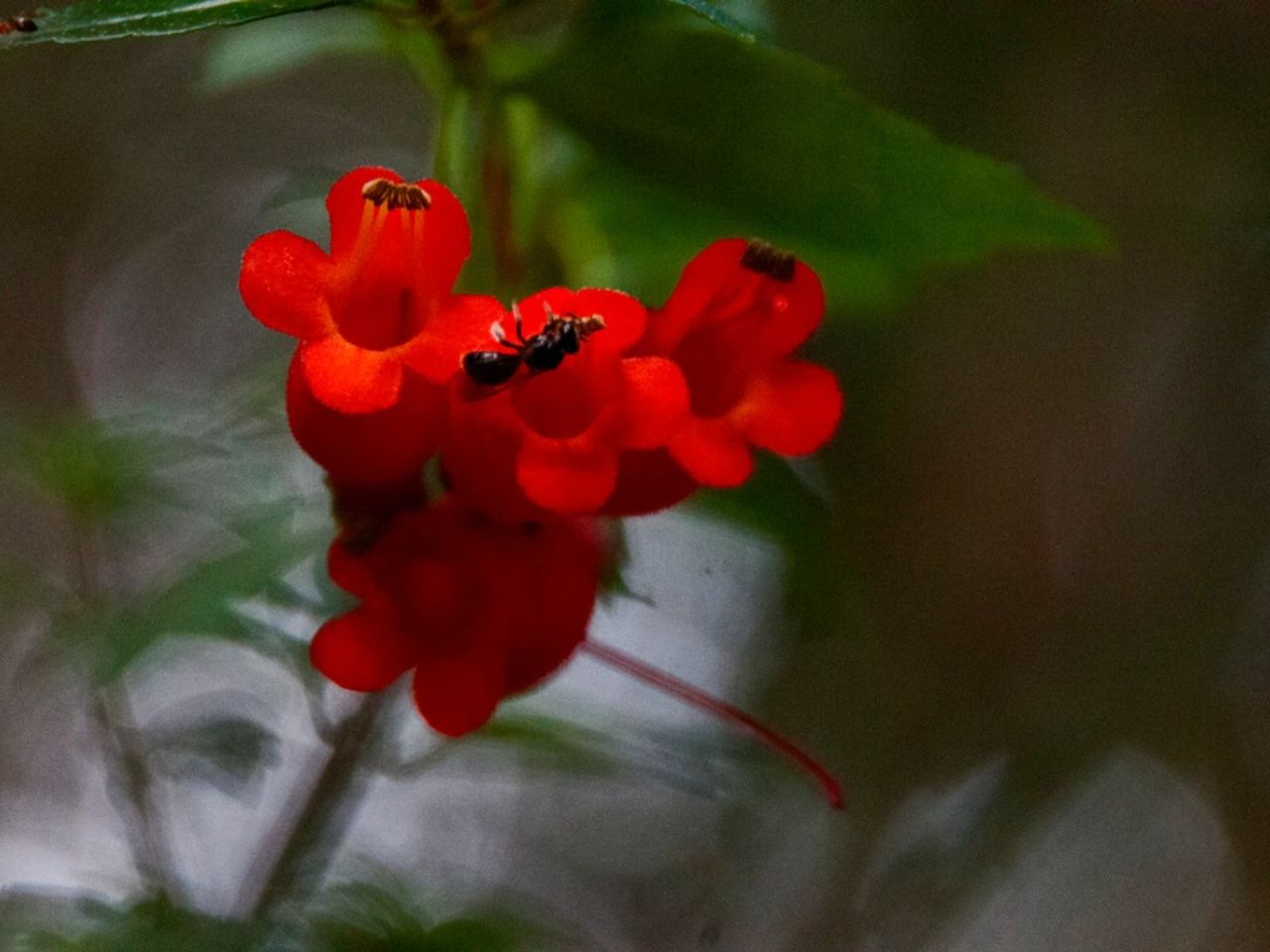What Is A Mitre Flower: Tips For Growing Mitraria Plants


Gardeners who live in warm regions will be delighted with Mitraria, otherwise known as mitre flower or scarlet mitre pod. What is a mitre flower? This Chilean native is a scrambling, evergreen vine perfect for brightening up full to partial shade locations. It produces bright tangerine colored, trumpet-shaped blossoms that attract a host of birds and pollinating insects. Some Mitraria coccinea info will help you decide if the plant is right for you and provide some tips on its habit and care.
Mitraria Coccinea Info
Mitraria coccinea is in the Gesneriaceae family of plants. It is a large vine that has copious brilliant blooms from spring well into summer. Try growing Mitraria over a trellis, fence or even sprawling over a stump or other less than appealing item in a colorful mound. This is not a frost hardy plant and should only be grown outdoors in United States Department of Agriculture zones 8 to 11, where it is a perennial. In zone 7, it can be grown in protected areas. You won't forget the sight of a tumble of elegant foliage and bold, huge tubular flowers. Mitre flower produces a vine up to 8 feet (2.45 m.), but it is a slow grower and may take 10 to 20 years to achieve its full size. This flowering vine is a magnet for butterflies, bees and many wild birds, including hummingbirds. Vines can be trained to vertical supports or allowed to create a vibrant mound or thicket. Another common name in its native range is botellita, or little bottles, referring to the bladder-like flowers. The plant requires consistently moist soil and an acidic soil pH. It also prefers well-draining loam and takes well to pruning to keep it in shape and form a more compact plant.
How to Grow Mitre Flower Plants
Mitraria vine has brittle stems that break easily. Each piece of the stem that contacts the soil can easily root and develop into another vine. Take semi-hardwood stem cuttings in summer and plant them into containers with well-draining peaty soil. Keep the containers consistently moist but not soggy and the stems will root readily. Another way to grow mitre flower vines is through their seed. Allow the pods to dry on the plant, crush the pods and remove the seed. Sow these in flats in winter, using bottom heat to keep the soil constantly warm. Place containers in a cold frame or greenhouse in spring, once soil is workable.
Mitre Flower Care
In the cooler zones of its potential range, Mitraria will need to be planted near the home on a brick wall or in an enclosed, protected area of the garden. Use mulch over the root zone to protect the plant from any light freezes. Mitre flower is not hardy if sustained freezing is possible, but you can plant it in a container, prune it back in fall and bring it indoors to overwinter. The vine has few pest or disease issues. Mitraria can be espaliered, trained across a wall or fence, providing a lean, dense screen of attractive foliage and huge flowers. Once mitre flower has established in ground, it is best to leave it where it is. These plants do not tolerate removal due to a large and deep root network. Better to prune the plant to the size you wish or root some of its stems to transplant to a new location.
Gardening tips, videos, info and more delivered right to your inbox!
Sign up for the Gardening Know How newsletter today and receive a free copy of our e-book "How to Grow Delicious Tomatoes".

Bonnie Grant is a professional landscaper with a Certification in Urban Gardening. She has been gardening and writing for 15 years. A former professional chef, she has a passion for edible landscaping.
-
 Ideal Azalea Water Requirements – For Lush, Healthy Shrubs That Will Thrive For Years
Ideal Azalea Water Requirements – For Lush, Healthy Shrubs That Will Thrive For YearsWhat are an azalea's water requirements? Learn how to keep these beautiful spring-blooming shrubs happy and healthy in your yard or container garden.
By Amy Grant
-
 7 Vegetables To Plant In April: Start Indoors Or Outside For A Bumper Summer Harvest
7 Vegetables To Plant In April: Start Indoors Or Outside For A Bumper Summer HarvestAchieve your growing ambitions with these best vegetables to plant in April – including cold-hardy crops to sow direct and tender varieties to start indoors
By Mary Ellen Ellis